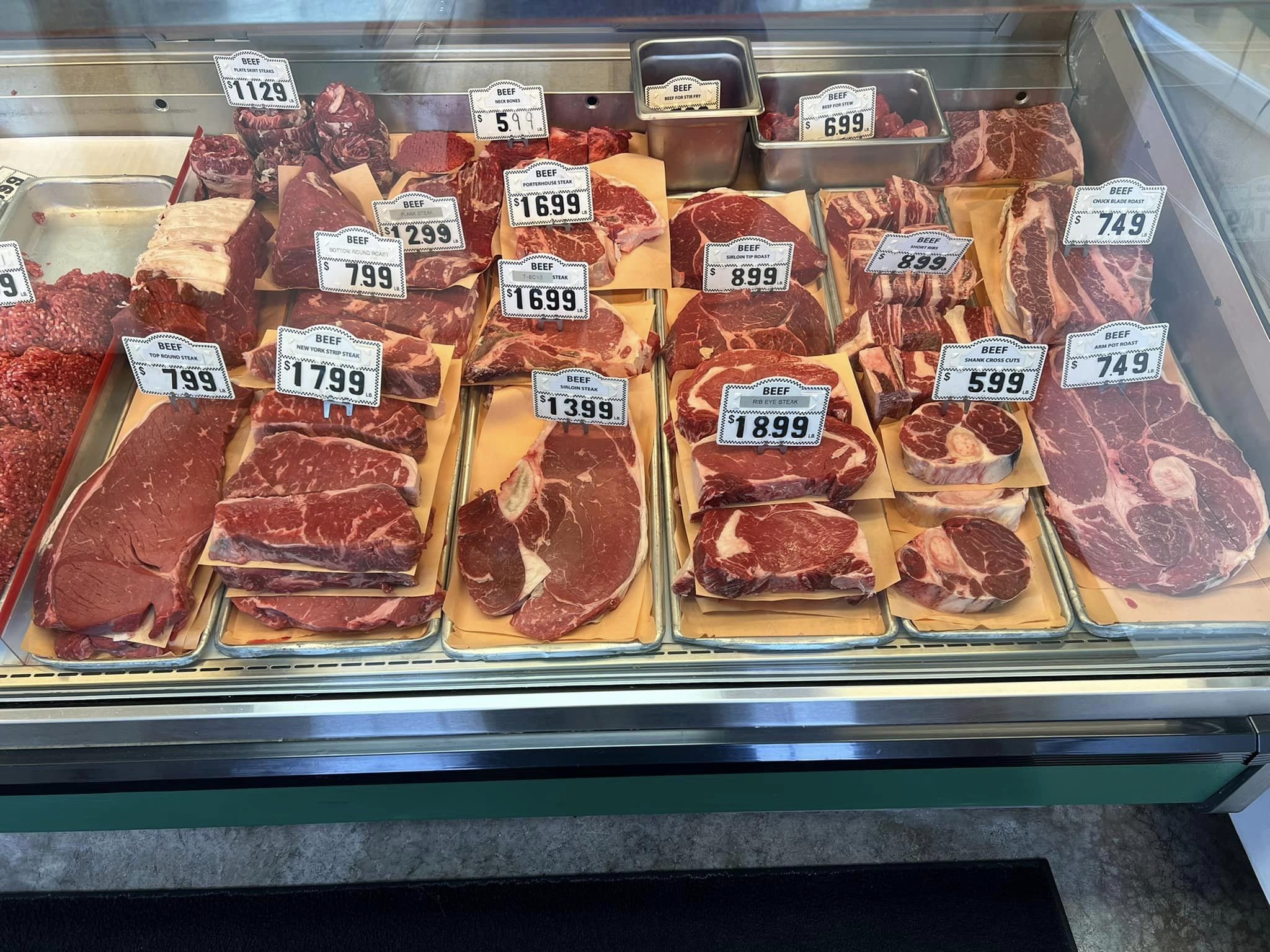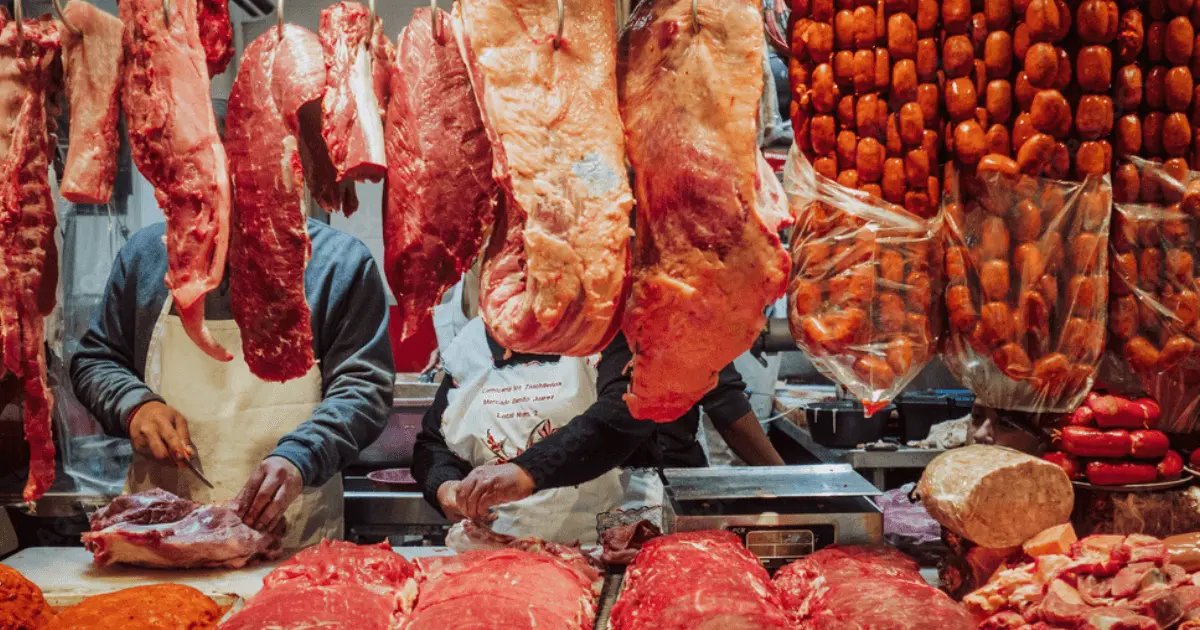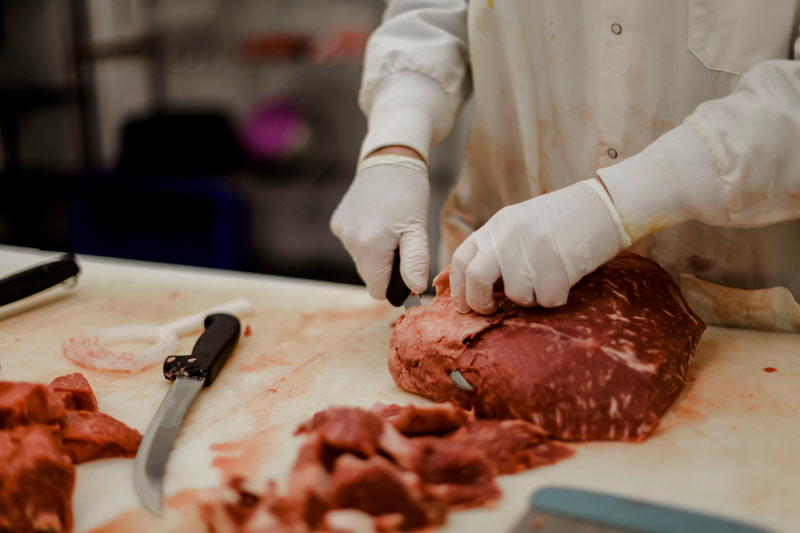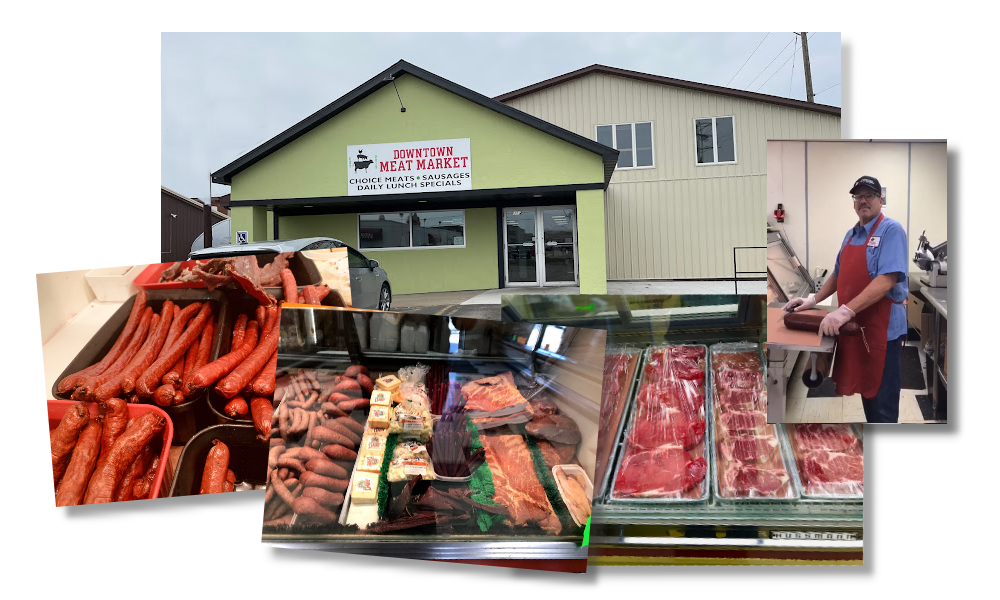Browse Through Bagley Farms Meat Market Edwardsville IL for Farm-Fresh Meat and Specialty Cuts
Browse Through Bagley Farms Meat Market Edwardsville IL for Farm-Fresh Meat and Specialty Cuts
Blog Article
Reveal the Art of the Butcher's Cut in a Modern Meat Market
In the ever-evolving landscape of contemporary meat markets, the butcher's cut has actually transcended its typical origins, merging olden craftsmanship with modern methods. bagley farms meat market edwardsville il. Today's butchers are not merely cpus of meat; they are experienced artisans that highlight sustainability and ethical sourcing. Their proficiency in selecting and preparing cuts customized to certain cooking requirements supplies an unequaled dining experience. What absolutely sets the contemporary butcher apart is their ability to forge a much deeper link in between customers and the origins of their meat. How do these masters balance tradition with advancement, and what effects does this have for the future of meat intake?
Evolution of Butchery Methods

The mid-20th century saw butchery techniques better refined by clinical understandings right into muscle biology and meat aging, enhancing both inflammation and preference. Developments like vacuum cleaner product packaging and refrigeration extended product shelf-life, enabling butchers to expand offerings and improve top quality control. This period likewise noted the rise of customized equipment, such as band saws and meat slicers, which increased accuracy and efficiency in meat handling.
Computerized systems currently help in monitoring animal provenance and optimizing cuts to meet details client preferences. Additionally, a renewal in artisanal butchery has actually arised, blending traditional abilities with modern-day expertise to cater to consumers seeking ethical and lasting meat choices.

Understanding Meat Cuts

Recognizing the complexities of meat cuts is necessary for both butchers and customers looking for high quality and value. Each cut originates from a different component of the pet, giving unique tastes, textures, and food preparation approaches. Proficiency of these differences not just boosts culinary experiences yet also maximizes the utility of each carcass. For butchers, precise cuts show skill and regard for the craft, guaranteeing very little waste and optimum yield.
The key categories of meat cuts include primitive, sub-primal, and retail cuts. Primal cuts, such as the loin, rib, and chuck, are the huge sections at first separated from the carcass. Butchers then break these down further into sub-primal cuts, before ultimately creating retail cuts available to customers, like ribeye or tenderloin. Each phase calls for careful focus to anatomical framework and muscular tissue composition.
Recognizing muscle composition is important; muscular tissues used a lot more frequently by the pet often tend to be tougher and are best fit for sluggish food preparation approaches, while less-used muscular tissues, like those found in the loin, are much more tender and suitable for cooking or roasting. Experience with these differences empowers consumers to make enlightened choices, enhancing their culinary undertakings.
Picking Quality Meat
Picking the ideal meat entails even more than just choosing an aesthetically appealing piece from the display screen. The art of choosing quality meat needs a critical eye and knowledge of certain attributes that represent quality and excellence.
Secondly, consider the marbling, which refers to the white flecks of fat within the muscular tissue. Proper marbling is an essential sign of inflammation and flavor, as it thaws throughout food preparation, boosting the meat's juiciness. Keep in mind, greater marbling typically correlates with premium quality cuts, such as USDA Prime.
Structure is one more important element; meat should really feel strong browse around these guys to the touch, not slimed or excessively soft. Additionally, bear in mind the fragrance. Fresh meat should have a clean, neutral scent, totally free from any sour or off-putting odors.
Matching Cuts With Food Preparation Techniques
Successfully pairing cuts of meat with the appropriate food preparation methods is vital for achieving optimal flavor and structure. Various cuts differ in inflammation, marbling, and connective tissue material, each requiring specific methods to open their potential. As an example, tender cuts like filet mignon and ribeye, with their inherent marbling, take advantage of high-heat, quick-cooking methods such as grilling or pan-searing. These methods enhance the meat's all-natural flavors and guarantee a juicy finish.
On the other hand, tougher cuts like brisket and chuck roast are rich in go to these guys collagen, which breaks down right into gelatin when cooked gradually. These cuts are optimal for braising or slow roasting, allowing the meat to soften in time and establish deep, intricate tastes. Similarly, cuts such as brief ribs and pork shoulder prosper with slow-cooking methods, where extended cooking times transform their robust structures right into delicious dishes.
Lamb shanks and oxtail, which require prolonged cooking to tenderize, are perfect prospects for stewing or slow simmering. These approaches coax out rich, hearty tastes while maintaining dampness. By comprehending the one-of-a-kind attributes of each cut, cooks and home chefs alike can boost their cooking developments, ensuring each dish is both pleasing and unforgettable.
The Butcher's Duty Today
Browsing the developing landscape of the modern meat market, the butcher's role today prolongs past simple prep work of cuts. Contemporary butchers are culinary craftsmens, educators, and supporters for lasting methods. They bridge the space in between the ranch and the fork by making certain honest sourcing, understanding pet husbandry, and prioritizing openness in the supply chain. This change mirrors the expanding consumer need for quality over quantity, where provenance and animal welfare are extremely important.
In addition to crafting exact cuts, butchers now involve directly with consumers, supplying cooking suggestions and tailoring selections to suit specific demands and preferences. Their experience in meat aging, marbling, and taste accounts encourages consumers to make educated choices, enhancing their cooking check my blog experiences. This personalized solution exhibits the butcher's advancing duty as a relied on advisor in the kitchen.
In addition, butchers are pivotal in decreasing waste, utilizing whole pets to create diverse products such as sausages and supplies - bagley farms meat market edwardsville il. This extensive technique not only respects the pet however also straightens with modern sustainability objectives. In this way, the contemporary butcher symbolizes both tradition and advancement, adjusting to an ever-changing market while maintaining the creativity and honesty of their craft

Final Thought
The modern butcher's craft elaborately weaves conventional strategies with modern-day advancements, stressing lasting methods and moral sourcing. Mastery in recognizing diverse meat cuts and high quality signs equips butchers to offer informed referrals, straightening details cuts with ideal food preparation approaches. This expertise not just elevates culinary experiences but likewise reinforces the connection in between consumers and the beginnings of their food. By honoring historic techniques while accepting contemporary needs, the butcher's role remains crucial in today's sophisticated meat market.
Report this page